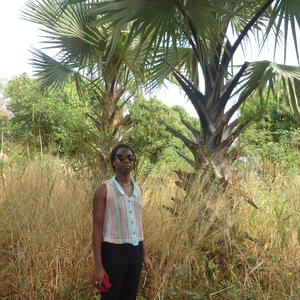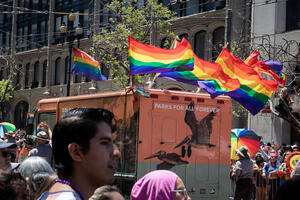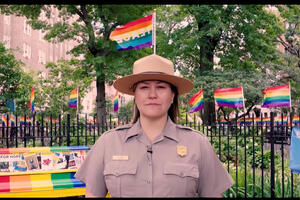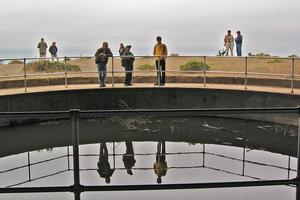
Here's where you can hike through history with Pride in the GGNRA
San Francisco, Marin park sites with deep LGBTQIA history
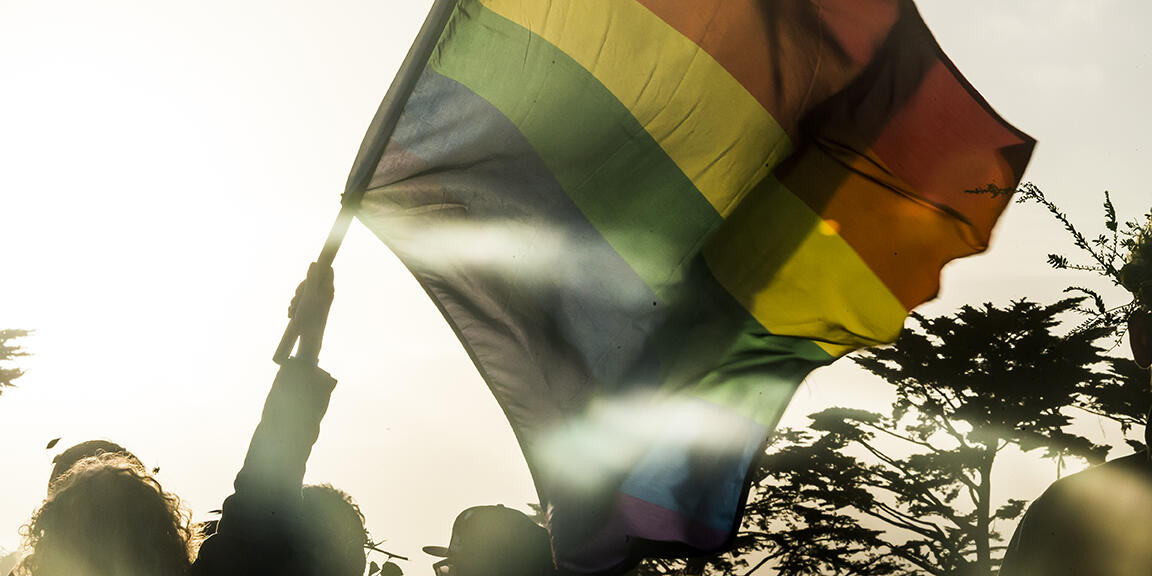
Time travel is a walk in the park in the Golden Gate National Recreation Area (GGNRA). For Pride Month and beyond, let’s make our way through some of the queer history in the parks. In more recent history, our park sites existed as military bases and fortifications—see the batteries and forts that line our coast. World War II brought millions of people out of rural areas into city centers like San Francisco, where they enlisted in the army and some LGBTQIA service members found community, instead of isolation, for the first time.
Guided by the work of National Park Service (NPS) rangers like Cordelia Vargas, who explores the complex connections between the military and LGBTQIA history in the Marin Headlands, we can use the more than 82,000 acres of the GGNRA as a launching pad for learning the history of local and national LGBTQIA activism in the parks.
Changing times: Marin Headlands
Starting at the trailhead at Rodeo Beach parking lot, take a half-mile walk up the Coastal Trail to Battery Townsley, a historic WWII-era fortification. Innovative for its time, Battery Townsley was a high-security operation designed to take out ships at sea. Unfortunately, it was useless against aircraft. The battery quickly became obsolete after the end of WWII.
The GGNRA has a storied LGBTQIA history including the U.S. military's shifting gender roles during the mid-20th century, which challenged the era's societal norms. However, moments of adversity served as catalysts here in the Bay Area and led to some of our nation's first gay rights movements and the growth of San Francisco's LGBTQIA communities.
Finding community: The Presidio
Travel south of the Golden Gate Bridge to where Gilbert Baker, creator of the Rainbow Flag to symbolize Pride, lived in the Presidio barracks after being drafted in 1970. Baker worked as a medic in Oakland and in his time off, he would walk across the Golden Gate Bridge, hike in the Marin Headlands, and explore the forests and beaches of the Presidio with his friend Jim, who lived in the same barracks. He and Jim fell in love but kept their relationship secret, afraid they would be caught.
After Pearl Harbor, people were eager to join the Army and recruitment went into overdrive. By the end of WWII, over 16 million people had joined the armed forces. Approximately 5,000 men were turned away from the armed forces for being gay. LGBTQIA people who made it into the military had to keep their sexuality secret or face being court-martialed if caught.
San Francisco: Then and now
History can be a tool for learning and a helpful guide to recognizing where we have progressed and where we can continue to grow.
In 1972, Gilbert Baker was honorably discharged from the military. He stayed in San Francisco and joined the Gay Liberation Movement, creating banners and signs for protests and marches. Inspired by the emotional connections flags had to identity, nationhood and even revolution, he designed a rainbow flag to represent the diversity of his community.
A hopeful flag to fly everywhere. A flag that still flies today.
